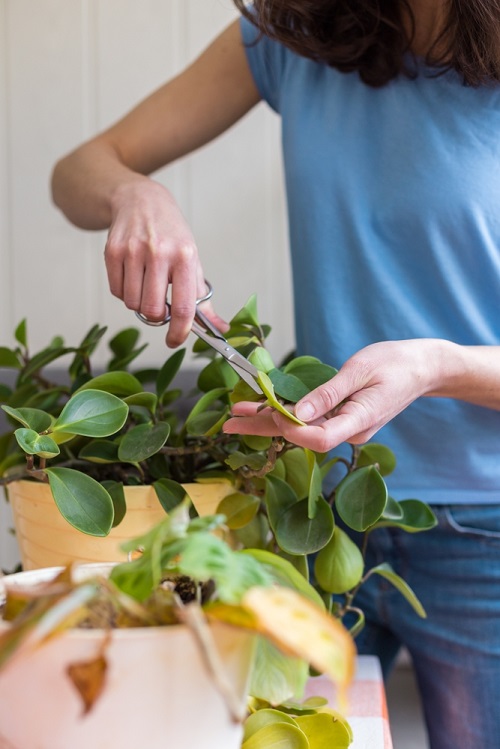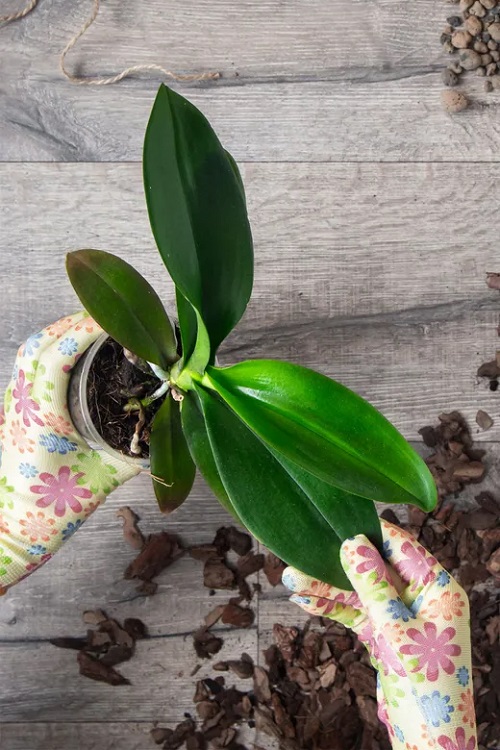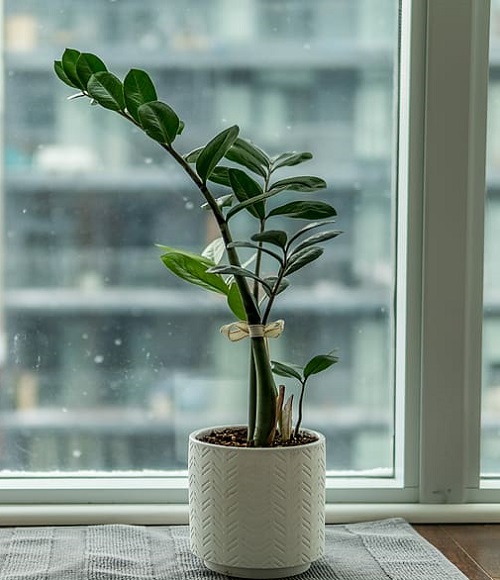Bringing Your Houseplants Indoors in Fall? Follow these tips for a smooth transition.
As the warm days of summer start to fade and the chill of autumn begins to set in, it makes us start thinking about transitioning our beloved outdoor plants back indoors. For those wondering how to do it, here are the best Tips to Follow Before Bringing Your Houseplants Indoors in Fall.
Check out the Most Essential Container Garden Design Tips here
Tips to Follow Before Bringing Your Houseplants Indoors in Fall
1. Inspect Your Plants
Inspecting your houseplants before moving them indoors in the fall is crucial. Look for pests, diseases, and overall health issues. Isolate affected plants, treat problems, and remove damaged parts.
This proactive approach ensures a smooth transition and prevents issues from spreading to other plants, leading to a healthier indoor garden during the colder months.
2. Lighty Prune If Required
Trimming dead or yellowing leaves and spent flowers improves aesthetics and reduces the risk of pests and diseases. It encourages bushier growth and minimizes stress on the plant during the transition to indoor conditions. Also, use strelized, clean and sharp tools.
Check Seasonal Houseplants That You Must Not Miss Growing here
3. Clean the Plant
Cleaning your houseplants before transitioning them indoors in the fall is a vital practice. Dust and debris accumulation on the leaves can hinder photosynthesis and create hiding spots for pests.
To clean your plants, gently wipe the leaves with a damp cloth or sponge, supporting the underside of each leaf to prevent damage.
Check the Best Tricks to Clean Water Stains from Plants here
4. Re-Pot if Necessary
If the plant is severely root-bound, re-potting it will be a good idea. Select 1 size bigger pot than the old one with good drainage, gently transfer the plant, and fill it with fresh potting mix.
Fall is not a bad time for repotting, as it allows the plants to acclimate to their new containers before winter’s reduced growth period.
Follow the Top 8 Mistakes to Avoid When Repotting Houseplants here
5. Transition Gradually
Transitioning houseplants gradually from outdoor to indoor environments in the fall is vital. Start by placing them in a shaded outdoor area for a few days or weeks. Monitor for any signs of stress.
Once they’ve adapted, move them indoors to appropriate light spots. This gradual process ensures a smoother adjustment, enhancing their chances of thriving indoors during the fall and winter.
6. Check for Pests
Checking for pests before bringing plants indoors is essential to prevent infestations from spreading indoors. Examine the upper and lower surfaces of leaves, stems, and soil.
Look for common pests like aphids, mealybugs, and spider mites. If you detect any, isolate affected plants and treat them accordingly.
Check Bizarre Pest Control Remedies and Ideas for Gardeners here
7. Adjust Lighting
Indoor light levels are typically lower than outdoor sunlight, so placing your plants accordingly is essential.
Choose a suitable location based on their light requirements, such as south or west-facing windows for sun-loving houseplants and east or north-facing windows for those that prefer indirect light.
8. Monitor Humidity
Indoor environments often have lower humidity than outdoors, which can stress some plants. To maintain proper moisture levels, either use a humidity tray, place a room humidifier nearby, or mist your plants regularly, there are other ways to increase humidity, too.
This prevents issues like dry, brown leaf tips and ensures your plants stay healthy and vibrant in the drier indoor setting throughout the fall and winter months.
9. Watering Routine
Adjust your watering frequency to prevent overwatering. When growing plants indoors, before watering, check the soil moisture by sticking your finger about an inch deep into the soil, or use a moisture meter; otherwise, water only when the top layer feels dry.
Ensure that the pots have proper drainage to avoid waterlogged soil, which can lead to root rot.
Check How to Flush Plants Without Overwatering
10. Fertilize Sparingly
Houseplants typically experience slower growth during the cooler months. Feeding the plant once in 7-8 weeks would be a good idea. Use a balanced liquid fertlizer diluted to 1/2 of its recommended strength.
Note: Remember, it is always better to not fertlizer at all in winter than to over-fertilize, especially in cold climates. Too much feeding can lead to overgrowth that may be weak and soft, which is more susceptible to cold drafts, diseases, and pests. When plants are stressed due to excessive nutrients, they can become an easier target for various pathogens and insects.
Discover the Best DIY Potassium Fertilizer Recipes here
Conclusion
Bringing your houseplants indoors for the fall and winter doesn’t have to be daunting. By following these essential tips, you can ensure a smooth transition for your green companions.
Remember that each plant is unique, so pay attention to their specific needs, and you’ll enjoy a thriving indoor garden throughout the colder months.











